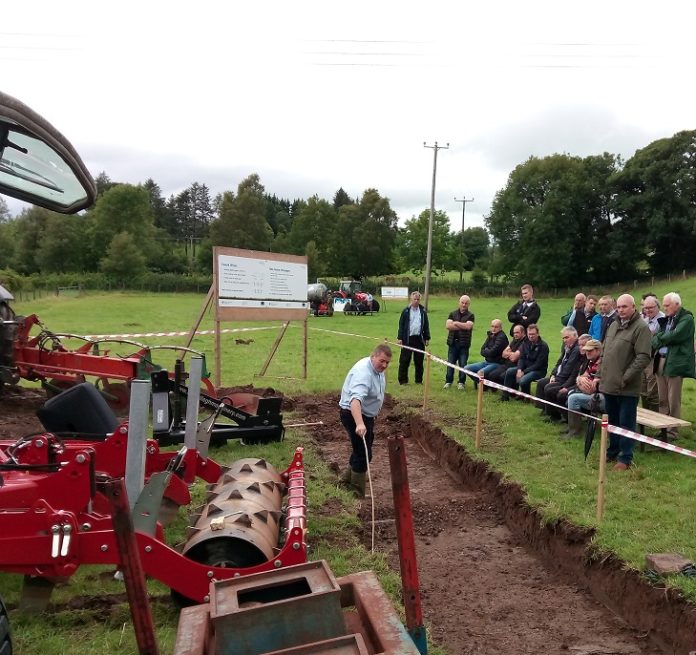Healthy soils are the engine driving crop and forage production on your farm. Recent wet summers, mild winters and modern farming techniques are having a detrimental effect on our soils. 2 Sustainable Soil Management Events recently took place with approximately 450 people attending despite the showery weather. These were the latest in a series of Farm Family Key Skills (FFKS) workshops for farmers, farm family members and employees. The events provided guided tours highlighting the importance of managing a healthy soil with the following key messages:
Soil Structure
A healthy soil is well structured and porous with rounded crumbs and lumps that are friable and crumble easily. Plant roots run down throughout the soil rather than being confined to the top few inches. The more porous the soil the better the drainage and aeration; oxygen drives organic matter decomposition, nutrient uptake by plants and the whole biological activity associated with a healthy living soil. Farmers need to dig inspection pits to examine their own soil structures and identify drainage and compaction problems.
Avoiding Compaction
Soil compaction reduces both forage production and utilisation and can cost up to £220/ha. Compaction is more severe when working on cultivated or bare soils and in wetter conditions. Try to avoid compaction by working with lower tyre pressures. In good conditions inflation pressures of 1.0-1.5 bar (14 – 21psi) are acceptable but on cultivated or moist soils this needs to be reduced to 0.5 – 0.8 bar (7 – 10psi). Heavier loads on soils are undoubtedly creating compaction and at a deeper level in the soil. The recommendation is that axle loads should be 6 tonnes or less yet slurry tankers with over 11-tonne axle loads are being used on damp soils. Farmers need to be check tyre pressures, invest in lower pressure tyre options and consider alternatives to heavy machinery.
Alleviation of compaction
Alleviation work should only be carried out if it is really necessary as you may just create a bigger problem. If required then remember:
- The right treatment – Depending on the depth of the issue and degree of compaction. Options include spiking, sward lifting, ploughing, subsoiling or mole draining.
- The right depth – You must work 1-2 inches below the problem.
- The right time – Soils must be dry enough to create cracks and fissures, ideally in the autumn. It is vital to allow the soil to rest as it will be unstable following treatment and should have no further machinery on it for several months.
Nutrient Management
Soil analysis is a vital part of nutrient management – Have you analysed your soil? Soil pH is critical. Adequate lime both increases nutrient availability and improves soil structure. Slurry is a valuable resource – applying slurry to fields that need it most by trailing shoe will save money and the environment.
Sward Improvement
Swards can be improved by management alone, stitching in, min-till or plough and reseed depending on conditions and desired outcome. Reseeding is expensive but introduces higher performing varieties. Forage types and varieties should be tailored to match sward management. Ploughing is more expensive but may be needed to improve soil structure.
At the end of each tour those in attendance had the opportunity to discuss one to one issues with CAFRE advisers and enjoy the trade stands on show and refreshments.
Farm Family Key Skills (FFKS) is a scheme under the Farm Business Improvement Scheme (FBIS) which is part of the Rural Development Programme 2014 – 2020 and receives co-financing from the European Agricultural Fund for Rural Development (EAFRD).






